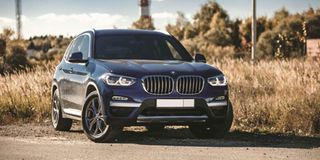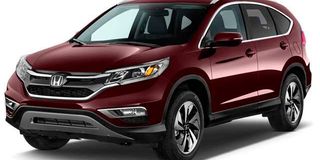
Toyota RAV4
| File | Nation Media GroupDN2
Premium
I’m shopping for a car, which of these five is worth my Sh2 million?
Hello Baraza,
I have previously owned a Toyota AE100 and 110. I now believe it is time for upgrade. I am looking for a used car that won’t cost more than Sh2m. Though I mostly drive in urban areas, I won’t mind a four-wheel drive (4WD).
I am looking for stability, safety, comfort and manageable fuel cost. Help me make a decision on the following vehicles:
1. Toyota RAV 4: People say this vehicle is not very stable, though spacious.
2. Subaru Forester: I hear it is stable, safe but poor in fuel economy and in design. It is also associated with spoilt kids who are rude on the road. I am a family man and a professional. I wouldn’t like such a label.
3. X-Trail: My mechanic tells me it is not stable and has a lot of electrical problems.
4. Honda CRV: I am told it’s very comfortable, spacious, stable, but very poor in fuel economy.
5. BMW X3 (Diesel): I have not heard much about this one.
I would appreciate your objective advice to a confused brother.
Jack

A BMW X3 G1.
Hello,
So, in this list of yours, you want to pick a car that comes closest to your demands, right? Let us see...
Toyota RAV4: It is a bit spacious, yes, but it is not necessarily unstable. Those who allege it are the type of people who don’t seem to value the brake pedal, so they tend not to use it. While it is not exactly a Jaguar stability-wise, the RAV4 is not a drunk, three-legged giraffe trying to lean on one side either.
Subaru Forester: Yes, it is stable, and yes, it is safe (as safe goes), but the fuel economy will depend on the specific model you opt for. The STi version is not your friend in this respect. The naturally aspirated 2.0 will not pinch any more than its rivals.
The association with spoilt kids is not a far cry, but it is not the Forester’s fault. More often than not, it will be the STi version being driven by a spoilt kid, not the regular non-noisy naturally-aspirated Cross Sport spec.
But then again, most of these spoilt kids find their way into the Impreza WRX. The Forester STi is for the performance enthusiast, who also wants a bit of common sense in his life. Spoilt kids don’t fall into this category.
X-Trail: The stability issues raised were most likely brought up by those who survived crashing their RAV4s and never learnt from my comment above. It is not as unstable as described. I have driven an unstable car before (a Land Cruiser Prado J120 5-door) and the X-Trail did not feel like it.
Honda CRV: Believe the hype until you reach the part where it says, “poor fuel economy”. Ignore this bit completely.
BMW X3: The choice of the discerning badge whore. No redeeming factors, considering it offers nothing more than the others except a BMW badge, and it costs a lot more.
Safety: The Toyota gets 8.7, the Nissan gets 8.6, the Honda gets 8.8, the Subaru gets 8.1 and the BMW gets 8.4. Please note, these figures are the average scores based on expert and user reviews.
The users awarded the Honda and Subaru very high marks (9.2 apiece), but the experts got those users’ heads out of the clouds with a worldlier reflection not based on ownership and/or affection.
Comfort: It varies a little. The X3 looks promising but it doesn’t really deliver. The Honda is smooth, but it is not particularly special, nor are the RAV4 and the X-Trail.
Get something with wood and leather interior with all the trimmings available from the options list if you really want to split them on comfort. The Honda may win this, courtesy of its smoothness.
Fuel costs: Of course the diesel X3 wins this, hands down. The rest just flounder around the 9 km/litre mark, give or take, the giving or taking being heavily dependent on environment and style and load during driving. With the exception of the diesel X3, steer clear of anything with a Turbo under the bonnet.

A Honda CRV 2016 model. Believe the hype until you reach the part where it says, “poor fuel economy”. Ignore this bit completely.
It's not strange that smaller engines pick faster than larger ones, they have less of a load to pull around...
Hello Baraza,
I salute you for the wonderful insights you offer. I own a Toyota Caldina 2.0L, a full-time 4WD. When I accelerate, I find the car really heavy, like an old Range rover 4.6 trying to hit a speed of 100 within five seconds. I find it so much slower than the 1.8 Toyota Wish and 1.5 Allion.
I was recently amazed to see how difficult it was to catch up with and overtake a Toyota Belta and Premio, which have smaller engine capacities.
I also find that the rmp indicator goes up to five for the car to swiftly overtake cars with lower engine capacity. Here are my questions:
1. Why is it that some smaller engines can pick up speed fast enough to match bigger engines without much struggle (Caldina versus Belta/1.5 Premio)?
2. What indicators are there to check in a car if I want to know how fast it can pick up speed, for instance time it takes to hit a speed of 100km/hour?
3. Which car brands are best in picking up speed fast without revving too much and without screaming/sounding too heavy? Are Toyotas comparable with Hondas or Nissan or Subaru on this one?
4. Which one is best among Caldina, Nissan Tienna, Subaru Legacy, Honda Accord, and Mazda Premacy in terms of acceleration, comfort, ease of handling, consumption, durability, and reliability on rough grounds?
Samson
Let us clarify something here: Have you heard an old Range Rover 4.6 (I guess this must be the P38A) try to clock 100 km/hour from rest in five seconds?
Of course it won’t make it, but that is what we call a full-bore standing start. From a 4.6 litre Rover V8 engine, it is raucous with it. If your Caldina sounds even remotely like that, you need to discard it.
Also, when you say at 5,000 rmp is when the “go” really comes in, that is not strange at all. It is called top-end power. Wait until you get to about 6,000 rpm then the VVT-i starts working.
Now to your questions: Smaller engines would “pick” faster than larger ones simply because they are generally found in smaller, lighter cars. So, they have less of a load to pull around.
However, I strongly suspect your Caldina is not in good working order if a Belta gets the better of it.
The indicators to check in a car to get a rough idea of how quickly it will get to 100 km/h include forced induction (turbochargers and superchargers) and engine capacity (bigger engines make cars go faster).
However, these are only for rough guesstimates and speculative comparisons. They are not scientific. To get the exact idea of how long a car will take from 0 - 100 km/h, you need the car in question and a bystander with a stopwatch.
The cars that pull hardest with the least amount of noise are of course German, especially the high end models – Mercedes, BMW, and Audi, more so the luxury barges, the S Class, 7 Series and A8, fitted with V8, V12 or W12 (Audi) engines of roughly 5.0 - 6.0 litres.
They will pull like nobody’s business and you won’t even hear them do it. You could throw the Lexus LS460 in there too. It is a taciturn one, this one...
Clearly Toyotas, Nissans and Hondas do not play in this league. We are comparing apples to dry leaves here.
Your final question. First, you need to specify which model you refer to. Cars like the Subaru Legacy start from the 160hp 1.8 litre naturally aspirated version to the 2.0 turbo STi with almost 300hp (almost twice the power of its stablemate).
Clearly, they won’t “pick” in the same manner. So the Legacy Turbo accelerates hardest, the Teana is most comfortable. Handling is a wrangle between the Honda Accord and the Legacy.
Consumption goes to the Accord (again) as does reliability with which it ties with the Caldina. Durability will depend on how many times you hold these “picking” competitions.
****
Hi Baraza,
Thank you for your entertaining and very educative column.
Now, allow me to ask you two questions.
1. I recently took my car to a reputable garage for a mechanical check-up but I was not happy with their service, even worse, they took the liberty of writing their name on the rear windscreen of my vehicle without my permission.
When I called them the following day to complain, they were unapologetic. Can I sue them for infringing on my privacy and would I succeed in court?
2. I bought a Mazda Demio on the strength of the many praises you have heaped on it in your column and so far it has not disappointed. It is a good car to drive, comfortable, stable, economical on fuel and very fast.
I was thinking of challenging my Subaru Impreza brothers in a speed competition. The problem is that the ABS light on the dashboard goes on and off, sometimes remaining on for several days. What causes this and how can it be sorted out? I also drove a friend’s Honda Mobilia and noted that the ABS light was on throughout.
Greetings,
1. I find it extremely irksome too that these garages plaster their stickers all over their customers’ cars at will. I am a stickler for a clean, fuss-free vehicle, you won’t find any stickers on my car except for what the government requires (insurance), and my I’m-in-trouble-please-help-me benefits-imparting AA sticker. Suing them might not lead anywhere, the judge might simply ask you to peel those stickers off and be on your way.
2. These are the likely reasons for the warning light: there is a fault in the ABS (anti-lock brakes) system, there is a fault in the normal brake system or the brake fluid level is low in either the master cylinder or the reservoir.
The safest thing to do is to have it checked out at a garage.





